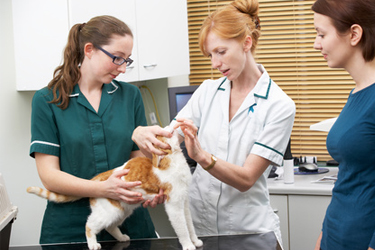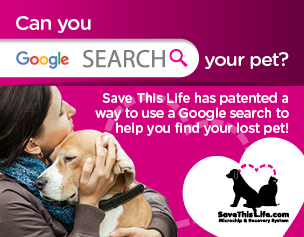Info to Share With Clients: 6 Tips to Care for Your Cat's Teeth

Original Post Date: 1/6/2017
Reviewed and edited by: Cathy Barnette, DVM, on January 30, 2023
Studies have shown that 50% to 90% of cats older than three suffer from dental disease requiring treatment.1 Improving your practice’s approach to feline dentistry will not only benefit your patients, it can also offer direct benefits for your veterinary practice.
Unfortunately, many pet owners are unaware of the harm caused by dental disease. Consider an information campaign to make them aware of the importance of taking care of their cats’ teeth.
Help reduce the risk of feline dental disease and instruct owners on the importance of tooth care with these tips:
6 Tips to Care for Your Cat’s Teeth
Tip 1. Start Young!
Begin taking care of your pet’s teeth when they are a kitten, if possible. Kittens are typically more receptive to new routines and activities than older cats, making this an ideal time to get them used to an oral health routine.
Tip 2. Avoid Common Mistakes
Do not
- Use human toothpaste on your pet
- If swallowed, fluoride toothpaste can make a cat ill.
- Foaming agents make toothpaste easy for us to spit out but can be bad for cats.
- Brush a kitten’s teeth when it is teething
- Pressure on already sore gums may cause pain and make your kitten wary of being handled during future dental care.
Tip 3. Research Dental Products
Many choices of feline dental products exist. Talk to your veterinary team about the best products for your pet. Many veterinary clinics carry a line of pet dental products, and additional information should be readily available.
When choosing a toothpaste or dental product, keep in mind the following:
- Home dental care products are available as pastes, gels, oral rinses, and sprays.
- Cat toothpastes use:
- Antimicrobial cleaners
- Flavors that are attractive to cats, such as:
- Tuna
- Poultry
- Salmon
- Feline oral washes are also available, with the following benefits:
- Provide antibacterial and antiviral benefits
- Promote the healing of diseased gums
Tip 4. Use a Gradual, Step-by-Step Approach
When brushing your cat’s teeth, start slowly. Begin by using your hand to rub your cat’s muzzle, over its teeth. This action mimics the cat’s natural behavior of face rubbing and will help the cat to relax. Once your cat is relaxed:
- Gently raise their lip and massage the gums with your finger.
- Next, wrap a piece of gauze or cloth around your finger and repeat the step of massaging the gums.
After a few tries, once your cat becomes comfortable, it is time to introduce a toothbrush or fingertip brush. Following the same steps, begin by gently brushing a few teeth. Once your cat accepts the dental tool, try adding a small amount of toothpaste to the brushing routine.
Tip 5. What If Your Cat Does Not Like the Toothpaste?
If your cat resists toothpaste, try using the water from a can of tuna instead. Offer it first to the cat from the tip of your finger. As your cat gets used to the tuna water, substitute the toothpaste by following these steps:
- Place a tiny amount of pet toothpaste on your finger.
- Offer your finger to the cat to let them lick the toothpaste off.
- As they get used to the toothpaste, gently rub your finger along the teeth.
- After rubbing their teeth with your finger several times, gradually introduce the toothpaste on a very soft pet toothbrush or a rubber finger brush.
Tip 6. Perfect Your Technique
Once your cat begins to accept brushing in small doses, you can advance towards thoroughly brushing your cat’s teeth.
- When brushing the gums, the most important part to clean is the gingival sulcus. This is the area where the gum attaches to the teeth, and it often traps food particles and bacteria.
- Position the toothbrush with the bristles along the gumline, then gently move the toothbrush back and forth, parallel to the gumline.
1Cornell Feline Health Center. Feline Dental Disease.
https://www.vet.cornell.edu/departments-centers-and-institutes/cornell-feline-health-center/health-information/feline-health-topics/feline-dental-disease.
Accessed February 1, 2023.


Working Here
Our team members are encouraged to be the best they can be... at Covetrus we believe we impact one another.
Learn MoreNews & Events
FDA Cautions Pet Owners Not to Feed Texas Tripe Inc. Raw Pet Food Due to Salmonella, Listeria Monocytogenes
The U.S. Food and Drug Administration is cautioning pet owners not to feed their pets any of the Texas Tripe brand raw frozen pet food listed below because several samples of Texas Tripe raw pet food have tested positive for Salmonella and/or L. mono.
Careers
Are you looking for a place to let your talents shine? At Covetrus, we help our practitioner customers better serve their patients and take pride in providing the best customer experience possible. Search our open positions to see our available opportunities.
Newsletter
Stay current with what’s going on with Covetrus, subscribe to receive our newsletter and email communications. Subscribers will receive the latest information in practice management, sales and marketing, animal health, and more.



-3-(1).png?sfvrsn=2d806d73_0)

Leave a comment